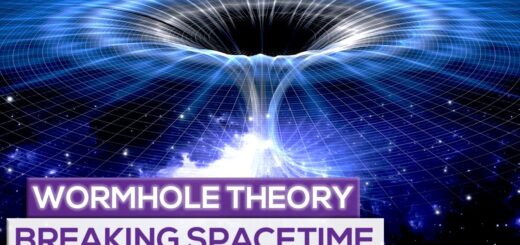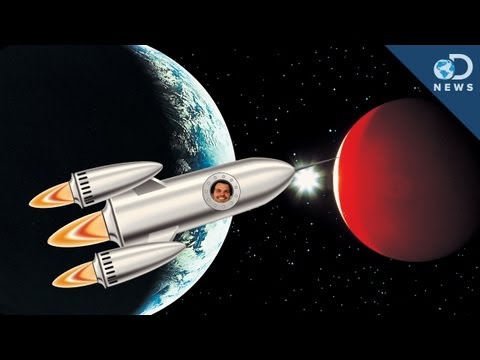The Physics and Philosophy of Time Travel
“You put this helmet on your head.” “And you can visit any year you choose.” “You could even travel into the far future.” Time travel is a concept that has been around for centuries. It is the idea of traveling to the past or future. Before we proceed any further, let’s lay the groundwork. According to Einstein’s relativity the perception of now is always changing and it moves along with time. We perceive the passage of time because we all accumulate memories and knowledge of past and present events which creates a sense of flow over our timeline. This is because it arises from human consciousness and the way our brains are wired. As Einstein himself remarked: “People like us who believes in physics know that the distinction between past present and future is only a stubbornly persistent illusion.” What if everything we know about time is merely an illusion? Could we find a way out of this by breaking the construct of how the universe progresses? Theoretically, would it be possible to break the natural flow of time? In this video we’ll explore just that and #Beeyond Often when people hear the term time travel it is in relation to a person going either forward or backward in time without any physical changes to their body. It would be funny if you travel back in time to see a baby version of you 20 years ago. But instead, when you jump out of the machine you are in the shape of a baby. Just like the one you’d like to see in the first place. In our understanding of the casual flow of time we are actually moving from the past to the future. There are different interpretations of this, but what people usually refer to as time travel usually mean; either going to the future faster or traveling into the past. In any case, instead of the normal flow of time we change the rate by X amount. According to Newtonian mechanics we perceive time as linear and deterministic. But ever since Albert Einstein published the theory of relativity, the Newtonian conception of absolute time and space has been replaced by the idea that time has a subjective significance to everyone. In this case, time is one dimension of space-time in special relativity (SR). And of dynamically curved space-time in general relativity (GR). From here on, the possibility of moving backwards or forwards in time might not be as far-fetched as one might think. In this case, it might be just as simple as ordinary beings can move between different points in space. There are many different hypothetical answers for time travel. And over the years, those scenarios have been put forward by notable scientists. Essentially, these scenarios are different from the notion of physical machine with levers and dials, the one that H.G. Wells proposed. Einstein also previously showed that time actually runs differently in different situations. This basically implies that time passes at different rates for different observers based on their traveling speed. Here is a very interesting example. The astronauts onboard the ISS orbit the Earth at 28 000 km/h. Taking into account the conflicting factors of GR and SR in this case, will get the net time dilation effects on the astronauts with respect to an observer on the planet’s surface. I don’t want to bore you with details. You could pause this video if you want. But the conclusion is.. The astronaut onboard the spaceship will get this amount of time dilation per day. For a typical crew member who stays on the ISS for 6 months, the total time dilation would be about 5 ms. In such a case where he has a twin the astronaut has experienced less passage of time than his twin counterpart who remained on the Earth’s surface. Giving the option to fast forward through time is a pretty cool idea. But it would be a one-way process where you wouldn’t have the chance to go back. However, there might be some scientific basis within the theory of relativity, supporting the possibility of time travel under certain scenarios. There was a scientist named Kurt Gödel in the early 19th century. He showed that there are some solutions to the field equation of GR. It describes space-time so warped that they contain closed time-like curves. This is where individual time cone twists and closes in on itself. It allows a path from the present to the past or to the future. Kurt Gödel’s solution was the first challenge in centuries, to one idea of linear time. Since we’re on the topic, we’ll mention a few notable attempts by popular scientists on time travel. Theoretical physicist Miguel Alcubierre proposed a speculative scenario. This involves a spacecraft that would contract space in front of it and expand space behind it. If this shortcut is taken, it’s going to result in an effective faster than light travel. You might even be able to use it for time travel. Other theoretical physicists have been thinking about this kind of shortcuts as well. For example, Kip Thorne and Paul Davis think it’s possible to use a wormhole and travel through space-time. In a similar way as GR could be used to make instantaneous spatial travel plausible. The concept of wormholes has been talked about quite a bit, especially in science fiction films. They are theoretical threads that connect two separate points in space-time. The thread is so twisted that these two points are virtually similar behind the space-time it bends between. To bring about such a wormhole, unimaginable amounts of energy would be required. Scientists are attempting to create mini wormhole type conditions, by speeding up electrons to near light speed and colliding them. The experiments are taking place here, at CERN’s particle accelerator. Scientists think that such a wormhole would collapse immediately and become a black hole, unless some way of holding it open were found. A negative energy for example. Unfortunately, it is theoretically possible but not yet practical. Given all this, the quest to time travel poses a compelling question, especially from a practical standpoint. Not only that, when you dig deeper into the causality of events, it becomes clear that time travel is close to impossible. And we would encounter a number of logical obstacles in doing so. We’ll discuss that in the next chapter. The likelihood of traveling backwards in time is generally believed to be much smaller than that of traveling forward in time. We often consider how temporal paradoxes are caused by the violation of laws of causality. These are cases of so-called “causal loops”. For our purposes, a causal loop is a series of events that loops back in time. It includes the event as one of its own causes. Take a look at this example. Suppose a woman goes to bookstore and gets a copy of a book about time travel. She then goes to a time machine and travels back to a year, in the distant past. She meets somebody there and gives that copy to him. The man is really impressed by the content inside and he rewrites the book as if he wrote it. People enjoy the book and fast forward it is massively published generations afterwards. Let’s summarize it. The bookstore got the book from the production. The woman got the book from the bookstore. And the production got the book from the man. But who exactly wrote the book? Where’s the entry point for the information into the loop? Each event in the chain has a sufficient cause, but the chain itself doesn’t. The full loop is inexplicable, despite each part being explicable. Questioning where an event originates from is one thing. However, it is another thing to ask where an entire chain of events actually comes from. Quite often it can be useful to interrogate the underlying causes of an event. Like, what caused it in the first place? I mean, suppose you wanted to know how you came to be born. You might appeal to earlier events, facts about your parents how they met. Facts about your grandparents. Or facts about humans, in general. Soon enough, you’d find yourself thinking about how our place in the universe evolved. So you might be able to trace the chain of causes and effects, back and back and back. Arbitrarily far. And there’s no answer to the question “Where does the whole chain come from?” Suppose, on the other hand, and this is a prospect that many physicists take very seriously, that there are causal chains that just appear from nowhere. Quantum physics and Big Bang cosmology take very seriously the idea that the laws of physics allow events to happen without any pre-existing conditions. Standard Big Bang cosmology says that the big bang isn’t the first event in time. Instead, it is the beginning of time. As Stephen Hawking said: “The question of what came before the Big Bang is meaningless, because there’s no answer.” Similarly just like asking the question of “What’s north of the North Pole?” There’s just simply no good answer. There comes a point beyond which, you simply can’t appeal to past events. Yes, causal loops, events that are among their own causes, information seemingly generated from nothing sounds very very counterintuitive. There might be a good explanation as to why each event occurred, but there’s no explanation for the chain of events as a whole. Perhaps causality is so sacred that the universe would try its best to safeguard raw information by simply giving no further explanation. That it is fundamentally impossible for us to see the origin with our own eyes. To experience and jump into different timelines. Let alone change any event that has happened before, in the hope of a better future. Perhaps this is our current best understanding of how time works. More importantly, how the universe works. Space and time. They are inextricably linked and determined by the laws of physics in our universe. It is an expression of how they relate to one another.













